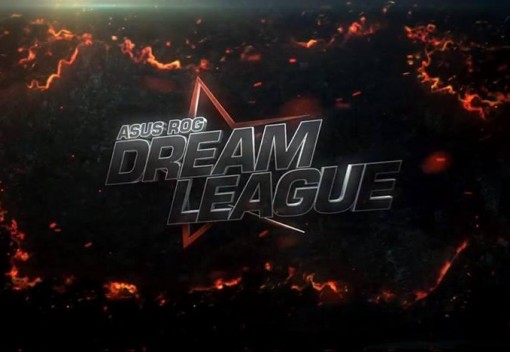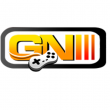Hellspawn talks DreamLeague; ‘we decided upon making sure that DreamLeague wasn’t intimidating for new spectators’
With DreamLeague's regular season concluding two days ago, onGamers took the opportunity to talk to the tournament's head organizer Christian 'Hellspawn' Lord about the season so far and his ambitions for the upcoming season.
We're here at the Dreamhack studio on the night of the league portion of the tournament's conclusion, how do you look back at the first season?
We're extremely satisfied overall. We feel like we’ve been able to produce one of the, if not the best, Dota leagues out there currently, all the teams have been extremely cooperative, transparent and accommodating throughout the league, including Sigma who unfortunately had to forfeit their participation in the league but still worked very closely with us to attempt to salvage the situation. So I want to thank ‘7ckingmad’ a lot for that. To sum it all up, DreamLeague has held a very consistent level in terms of production and broadcasting as well, and the appeal the Dota 2 community feels about the people in front of the camera has also been reflected in the viewer numbers.
Have you set any specific goals for the future with the league? Is it DreamHack’s main focus throughout 2014?
It’s a major investment from our side with the studio, and with the final portion of it being played at Dreamhack Summer now it’ll definitely be our major focus for the time being. Having it being decided on LAN after following the season makes it all the more important to make a show of the playoffs where we can have the players interact with the fans and truly put on a spectacle the fans in attendance and the one’s at home can truly enjoy.
At your kickoff in the beginning of the year Tomas Hermansson, director of esports at Dreamhack, said that you had actively thought a lot around the different structures that suits all of your titles, and that the Bo1 league structure suits Dota 2 far better than the qualifying means you have for SC2. Could you elaborate on why that is?
I think the main aspect that we’ve been looking at is increasing the size of the interest and overall community that’s based around Dota 2, and to make it more accessible we decided upon making sure that DreamLeague wasn’t intimidating for new spectators. The solution we offered to that was the Bo1 format and relatively few matches only three days a week makes it an incredibly easily accessible tournament. The hardcore fan of Dota doesn’t need to spend a lot of time searching for an overwhelming amount of it, whilst the average viewer who only wants to catch a couple of games a week can do so easily by the structure of the DreamLeague.
So you could say that our main goal was making the tournament easy to follow, and including the contributions of TheGD Studio cast actually appearing on-camera in a very well-produced setting creates a great viewing experience and ties it all together, which I think is great because when you spend 16+ hours a day in the studio on every day you shoot it’s impossible to make all the broadcasts hold the same standard, but I feel like we’ve managed to even set our lowest standard at a height that’s still produces awfully impressive and coherent broadcasts.
Starladder XI took their league to a truly global level with teams from all around the world converging at their LAN finals. Are you looking at taking the DreamLeague to all corners of the earth in season 2?
What’s interesting about Dota is that it’s one of the few games I feel where you can actually compete transatlantically under pretty good circumstances in terms of ping, and even though we’ve been pitting teams against each other in a Bo1 we still feel that the overall better team often does come out on top. However, when you get Asia involved it simply isn’t possible to provide the two competing teams with the ability to compete fairly without the server playing too big of a role in the outcome. We also thought that simply “adding on“ a Chinese portion wouldn’t do the DreamLeague any real favors since that would be a commitment to the viewers that might not be all too easy to follow. Similarly, just inviting a Chinese team feels like a cop-out to all the teams that participated in the regular league of the tournament, as it would mess with the seeding from the standings.
This is not to say that we aren’t interested in the possibility of adding on an Asian division, or Chinese division. But it all comes down to the execution and it holding a similar standard to what we offer currently.
Have you noticed that viewer count fluctuates a lot depending on which teams play on a given day, or have you managed to achieve a consistent amount of viewers on every broadcast?
Of course viewercounts differ between days, I think it’s inevitable given that the league is so long and you are guaranteed to have certain days where there aren’t any big fan favorites participating. But with that said, we don’t want to plan our broadcasts around them like other leagues do once in a while, we always accommodate the teams first and adapt to their needs first and foremost.

Is it safe to assume that you will be switching anything up for the second season of the tournament?
I think we need to look at what’s best for our own product and the needs of the scene as a whole before we say that we will change anything in the league drastically. Considering the scope of our operation as well I’d wager that broadcasting one day of DreamLeague costs more than the coverage of several of our competing leagues due to the machinery behind it and the amount of people needed to operate it.
For us we’re also in a rather precarious situation as we book our festivals and plan around them at the start of each year, and given the nature and size of them many of our own tournament efforts look to end at the time of them, which means that we’re currently not in a position to further extend or shorten the DreamLeague for the upcoming season.
Is having to plan around The International an issue for tournament organizers?
Dreamhack has a very healthy relationship together with Valve, but in the end the publishers of a game that is competitive has a to say when it comes to how and when things regarding their product functions and takes place. Many of us tournament organizers assumed that TI4 would be taking place in August or September and all of a sudden we found out that it will occur in July, for better or worse. Whilst I can see how some parties think the lack of communication from Valve regarding the dates of this year’s International was frustrating, it’s still this completely different beast from anything else the Dota 2 community is currently privy to; it opens the eyes of a wider range of people and helps expand the entire scene in a way that would honestly be impossible without it. So in the grander scheme of things, we really appreciate TI and think it provides something extremely important to esports as a whole.
Compared to your kickoff season, how much more improved has the first official season been in comparison?
The biggest improvements are all internal if you ask me, the fact that we’ve got the studio up and running. Being able to deliver daily esports content consistently, and putting such a massive focus on Dota 2 feels like it has truly paid off and being able to set the stage so perfectly for Dreamhack Summer will make it an even better event.
Favorite storyline overall in this first initial season?
Team Dog (Mousesports), this ragtag bunch of players who somehow managed to find their place in this massive league and has proved time and time again that they deserve to be there amongst some of the best teams in the world is truly a fun storyline.
Image Credit: Dreamhack
Photo Credit: The GD Studio, Helena Kristiansson









